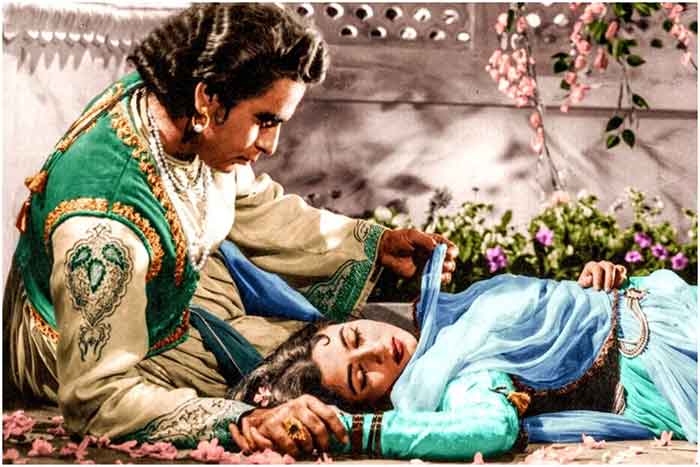
This robust play depicts the dizzy growth of luxury towers displacing slums in Mumbai and much more. It does this with so much energy, satire, and imagination and theatricality. It is so unlike most other plays. One was gripped from the beginning to end. Todi Mill Fantasy is so unpredictable, that is one of its best qualities. One had thought this may be a routine stereotype about the working class but one is in for a pleasant surprise.
There is a live music band on stage and much of the action takes place at a height, on top of a toilet in fashionable café . Reminded me of the performance of Brecht’s Arturo Ui done by Alyque Padamsee in the early 1970s. And the vigorous music is a reminder of Teen Paishacha Tamasha, another Brecht adaptation directed by Jabbar Patel with Nandu Bhende in the lead role.
Saw the production last evening in an architecturally good looking municipal theatre named most appropriately after Annabhau Sathe, a real hero of working class culture, so prolific and talented and all this with a life of poverty and constant struggle. This was an open air theatre, very close to the Victoria or Jijamata garden. It has a lovely open space with much greenery and there is a prominent fruit tree wood apple or Kavath in Marathi.now thought to be rare. the fruits were sizeable and so visible, coming out of the trunk. One cannot ask more from a theatre site.
The theatre was ready a couple of years ago but has opened only recently .Politicians would vie for hogging the limelight at the inauguration but political instability came in the way and we have access to it without such formality.
Sathe, a dalit. will remain immortal for much of his writing and his skill has a ballad performer but here is one sentence of his which shows his grasp of history and reality. He said the earth is in balance not because it stands on the head of the mythological snake Shesh Naag but on the toil of the worker. We inherit the world today based on the toil of many since centuries, the toil of farmers, slave, industrial labour and so on.
The play centres around four friends from working class, their aspirations as they find luxury towers coming up displacing slum dwellers with the help of politicians, they are desperate to get out of the rut. They dream of starting a project of attracting tourists to see slum life, as part of it a ropeway from one tower will give them an aerial view.
One of them is a cleaner in the toilet block where he encounters a scantily clad, drunk young model as she hides from the police after crashing against another car. One of the early scenes shows him cleaning the vomit of this model which is so telling because it really shows the class relations, a working person has to clean the vomit of a representative of the parasite class.
Fantasy and reality are mixed in a wonderful way. All the performers are outstanding . One was particularly struck by the performance of Pramitee Narke because she shows the nuances of an upper class representative with such aplomb and body language. This is special because in real life she comes from an entirely different background and has done very different roles like the one of Savitraibai Phule, the pioneer of women’s education. She is the daughter of Hari Narke, a scholar of Ambedkar and Phule, who began as a factory worker and whom we lost recently. Particularly sad for me because I knew him well for years, he always wanted me to see his daughter’s performance which I could not do earlier.
The play is dedicated to the memory of Jayant Pawar, playwright and short story writer, with a rare grasp of working class life and politics.
Now, on another sterling theatre personality.
Safdar Hashmi, prominent theatre artist, was killed while he was doing a street play in Delhi in 1989 because he and his group were doing protest theatre. He was there despite threats to his life. Two days later, the group performed the play at the same venue. All were in mourning and the cast was not in a mood to laugh in a scene in which the actors were expected to laugh. Moloyashree, his partner, insisted that they laughed and they did. That is real commitment.
And Safdar inspired others. Years after the murder, during one procession some young girls carried a poster saying they were inheritors of the Safdar tradition. Sudhanva Deshpande, a part of the Jana Natya Manch and Leftword Books editor, was amazed. These were girls born after Safdar’s death and they found him so relevant. Then he decided that he must write a book on Safdar. He did and it has been translated into eight languages including Bangla and Kannada. He showed all of these to the audience yesterday.A Marathi version translated by veteran Shanta Gokhale was released yesterday at Dadar Matunga cultural centre.
Anand Patwardhan, film director, said his common link with Safdar was we both dealt with life on the street, the nukkad and so on. Safdar also helped restore old films of Ritwik Ghatak in alliance with Mani Kaul. Sanjeev Khandekar, painter and poet, said Safdar had a special sense of sound and he noticed this in the work of Ghatak. Ritwik made pioneering use of sound as an instrument of structuring his film in a dialectical framework. In his hands, for the first time, sound in Indian cinema graduated from merely amplifying dialogue and ‘effect’ music to becoming a conscious part of the whole design serving as much as to heighten as to comment, analyse and throw into analytical perspective the immediate dialogical and narrative context.
Sandesh Kulkarni, actor, read out extracts from the book. Dr Ashok Dhawale, national president of All India Kisan Panchayat, Uday Narkar of CPM, Dr Maya Pandit, critic, and Vijay Patil of Janmarg Publication, joined in the triburtes.
This is not a story of death. It is a story of life. The luminous life of Safdar Hashmi, extraordinary in all its ordinariness.
On New Year’s Day in 1989, Jana Natya Manch – Janam – the theatre group Safdar was a part of, and which he led, was attacked while performing a street play on the outskirts of Delhi. He was only thirty-four when he died from injuries sustained during this senseless attack.
Beginning with a record of the attack that killed him, this vivid memoir illuminates the life of Safdar Hashmi – artist, comrade, poet, writer, actor, activist, and a man everyone loved. But this is not a book about one man or one tragic incident. Halla Bol shows us, close up, how one man’s death and life are intertwined with the stories of many people.
For a generation that grew up without knowing Safdar Hashmi, Halla Bol renders his passion, humour and humanism into an intimate portrait. It also gives an understanding of resistance, and the strength to put it into practice. It shows the profound link between ideology and real-life struggle. The ideas that Safdar and his colleagues grappled with during a period of tumult and change in India are harbingers of the society we are today.
Halla Bol, the play Janam was performing in Jhandapur at the time of the attack, is included in English translation as an appendix to the book.
Vidyadhar Date is a senior journalist, culture critic and author of a book on public transport













































